Хаас за Великобритания
Ромен Грожан:
Silverstone is one of the fastest tracks in Formula One, but it’s not necessarily from long straights but rather from long, flowing corners. Can you describe the feeling of speed you experience at this power circuit?
It’s a really cool track, especially the fast part through Maggotts, Becketts and Chapel corners. When you have the grip in the car there, you really get the sensation of the g-forces. Everything’s pushing down. You really want to get the first part of the flowing corners right. If you don’t, you just lose a lot of time. When the car is very stable and has good balance, you can go flat out and really push it to the limit. That’s where F1 is at its best.
Is Silverstone the track where you’re able to run at full throttle for the longest periods of time?
I think probably Baku we were flat out for longer periods of time, but Silverstone is a power track as well. You need good power to get a good lap time there. There are a few straight lines and a few overtaking opportunities but, mainly, Silverstone is about the grip of the car through the high-speed corners.”
How do you find that edge to determine when you can be flat out and when you can’t?
Well, you find out quickly when you’re wrong.
With speed playing such a role at Silverstone, how difficult is it to overtake? And if the opportunity presents itself, where can you overtake?
There are a few spots. On the straights and through the high-speed corners, you have an opportunity if your car is much better balanced than the car in front of you. After turn three or turn four, there’s the long section after the slow-speed corners, and that’s a good opportunity as well. But the thing about Silverstone is really the difference between a well-balanced car and an unbalanced car, that’s where the opportunity lies.
At most circuits, pole position is critical. But for some reason, not as much at Silverstone, where the pole winner has only gone on to win four times in the last 18 years. Is this happenstance or is there something about the track’s layout that provides more opportunity for those a little deeper on the starting grid?
Silverstone is in the UK, and the UK weather is known to be sometimes rainy, sometimes dry. That plays a part. It can change a lot between qualifying and the race, and then even in the race itself. You can also have a good car in qualifying, but if it’s not quite perfectly balanced for the race, you’ll pay the price. That’s where success lies, and probably why most of the winners didn’t start from pole position.
Is there a track we’ve been to so far this season that emulates what you’ll experience at Silverstone, thereby allowing you to start with a more detailed baseline setup?
I think Silverstone is a track that the team knows very well and it’s in line with Barcelona. We can use the knowledge from Barcelona and use it at Silverstone for the normal baseline setup and, hopefully, get it right from the beginning.
How much downforce do you want at Silverstone? As much as you can get, or do you want to be able to slide the car a bit and have a little less drag?
You want as much downforce as you can get.
This year’s race marks Silverstone’s 50th Formula One race. Is there one from the previous 49 races at Silverstone that stands out for you?
I’ll go for the one from 1983 when Alain Prost won the British Grand Prix driving for Renault.
What is your favorite part of Silverstone?
The high-speed corners at Maggotts, Becketts and Chapel.
Describe a lap around Silverstone.
You start off on the new main pit straight before taking the first turn flat out. Then you come into two hairpins. The first one is more open than the second one, and the second you really want to go for as early as you can. Then you go through the old last couple of corners –very tricky braking here – before going along the old pit straight. It’s very tricky here on power, as well. Then you get to the very high-speed section. It’s a great sensation in the car here. You stay flat out as much as you can into Maggotts and Becketts, and then downshifting every corner a gear, and then you’re onto the Hanger Straight to Stowe corner. This is another tricky one where you enter very quickly. You want to go on the power as quick as you can, but the corner is closing down more than you think. Then you go to the last chicane – heavy braking and it’s very bumpy. Then you’ve got your final throttle application with a lot of g-force on the right-hand side and you cross the finish line.
Естебан Гутиерес: Silverstone is one of the fastest tracks in Formula One, but it’s not necessarily from long straights but rather from long, flowing corners. Can you describe the feeling of speed you experience at this power circuit?
Silverstone is one of my favorite tracks because it has a lot of fast and flowing corners, and it’s really one of the best tracks to drive in the wet. I’ve had great memories there. I’ve won many races there, so I’m really looking forward to coming back and getting the maximum from myself and the car.
Is Silverstone the track where you’re able to run at full throttle for the longest periods of time?
It’s one of the longest. You have plenty of fast corners and you have a lot of medium-long straights – not extremely long but more straights than usual. It’s quite a fast circuit in general.
How do you find that edge to determine when you can be flat out and when you can’t?
It’s about practice and experience. You go into the corner and sometimes you take the risk and you lift a little bit, or you go the next lap and you say, ‘OK, this time is flat out’ and you stick your foot on the throttle. It’s as simple as that. It’s one of the most exciting parts of driving a car. Finding the challenge to go quicker also depends on the tires, on the wind direction, on the track conditions.
With speed playing such a role at Silverstone, how difficult is it to overtake? And if the opportunity presents itself, where can you overtake?
I would say the main section is where you can really overtake, between turn two and turn three. Approaching turn three is a high-braking zone coming from a fast section. Then another one is after Becketts, where you have a straight, which usually is a good part to overtake. Overall, Silverstone has a couple of good sections where you can overtake.
At most circuits, pole position is critical. But for some reason, not as much at Silverstone, where the pole winner has only gone on to win four times in the last 18 years. Is this happenstance or is there something about the track’s layout that provides more opportunity for those a little deeper on the starting grid?
I think it’s a matter of Silverstone being a track that offers different track conditions. Very often, it’s raining or just changing conditions, so it can put a lot of variability into the results. But it’s also quite demanding for the tires, and if you ask too much of the tires, it’ll change your strategy, and that can play a role in the results.
Is there a track we’ve been to so far this season that emulates what you’ll experience at Silverstone, thereby allowing you to start with a more detailed baseline setup?
Silverstone is a pretty particular track that has a lot of fast corners and just a few slow-speed corners. You try to put more emphasis into the car for high-speed corners, and protecting the tires with the aero balance is important. As a new team, it’s always a challenge to get there for the first time.
How much downforce do you want at Silverstone? As much as you can get, or do you want to be able to slide the car a bit and have a little less drag?
It’s important to have as much downforce as possible at Silverstone. Even though it’s a pretty fast track, you have a lot of corners and you want downforce, especially when it’s raining. If you have a lot of changeable conditions, you really want to make sure you have as much downforce as possible.
This year’s race marks Silverstone’s 50th Formula One race. Is there one from the previous 49 races at Silverstone that stands out for you?
I’ve had pretty good races in the past when we had the old layout in different categories. I’ve won many times, but definitely being a part of the 50th Formula One race at Silverstone gives higher significance to everything. I’m going to give everything and do my best to get a good result there.
What is your favorite part of Silverstone?
I would say Becketts is my favorite part. It’s a part of some very amazing corners.
Describe a lap around Silverstone.
You approach turn one after the main straight, which is usually flat out and on the limit. You go into turn two, which is important to prepare the line for turn three. It’s a high-braking corner, pretty slow, but then goes into another hairpin – a very slow-speed corner. After exiting turn four, you have turn five, which is also flat out, and it’s important to have a good balance and good traction. Approaching turn six is a medium-speed corner and you enter with a lot of speed. Entry is more important than exit. Then you have turn seven, which is a pretty long corner and pretty challenging for the tires because you arrive with the tires warmed up on the surface and you’re trying to get good traction out of there. Then you come into the backstraight before turn nine, which is one of the nicest corners on the circuit. It’s a very high-speed corner and then it starts my favorite section, approaching into the series of corners which is 10, 11, 12, 13 and 14. It’s very important to have a good rhythm. You enter with a lot of speed and you can’t lose the line. You want a good exit out of the last corner. Then it’s down another straight. You approach turn 15, which is a very nice corner, very fast, braking very late and with a lot of lateral while turning into the corner. Then you approach the last part of the track, which is the chicane, and a very long exit after the chicane, which obviously makes traction very challenging.
Гюнтер Щайнер: Silverstone is a home race for most Formula One teams, as even Haas F1 Team has a European base that is approximately 30 minutes from the track. NASCAR’s home race for teams is Charlotte, and for those races, each crew member arrives on his or her own, driving and sometimes even cycling from home. Is this possible for our crew members, or do you treat it the same as any other race and put everyone up in a hotel and they ride together to the track?
Travel is a little bit mixed for the team members. Some stay at home and then take a bus to the track since there is limited parking, while others will stay at a hotel and then also take a bus to the track. If they arrive at our Bunbury location at a certain time, they can catch a ride to the track as well.
Silverstone is a fast track where drivers are able to run full throttle for long periods of time. How do you help them find that edge to determine when they can be flat out and when they can’t?
It all depends on the comfort level of the drivers. You can take some downforce off on the straight line as long as they are comfortable with it.
How much downforce do you want in the car at Silverstone? As much as the driver can get, or do you want him to be able to slide the car a bit and have a little less drag?
The car must be stuck to the ground. As soon as you take away too much downforce, the tires won’t last and you begin to have graining, which the drivers do not like. We have to take off just enough downforce so that the car doesn’t slide and start going through the tires too quickly. It’s less about the driver feel and more about tire preservation. The driver may be more comfortable when the tire is going away, but then you risk the chance of the tire going out.
Will we see any updates to the VF-16 from an aerodynamic standpoint at Silverstone?
No, there will be no changes to the aerodynamics.
Haas F1 Team gets the upgraded Ferrari engine package at Silverstone. What makes it better from the previous-generation package you used from the start of the season through last weekend’s Austrian Grand Prix?
The car will be getting an engine package upgrade, which will be a combination of being more efficient and having better performance.
Ferrari has run the upgraded engine package in its cars since Canada in early June. Why the wait before Haas F1 Team installed it in its cars?
It is quite normal that we get the upgrade a couple of races after Ferrari. We are very happy with that since we don’t have to test it and they get to experience it first and make changes, if needed.
At most circuits, pole position is critical. But for some reason, not as much at Silverstone, where the pole winner has only gone on to win four times in the last 18 years. Is this happenstance or is there something about the track’s layout that provides more opportunity for those a little deeper on the starting grid?
I don’t think there is a specific reason. I know that it is, for sure, possible to overtake at Silverstone, but I think so few people not winning from the pole is more happenstance than anything.
Weather tends to be a large variable at Silverstone, with hot weather interspersed with cool, blustery and even raw conditions. How do you prepare for temperature swings and weather changes, be it at Silverstone or anywhere else?
Other than having data together for the tires and how they work in the different temperatures, it’s honestly hard to prepare. The best we can do is keep our eye on it and go with what the weather gives us.
Is there a track we’ve been to so far this season that emulates what you’ll experience at Silverstone, thereby allowing you to start with a more detailed baseline setup?
We are able to gain experience and knowledge from every track, but it doesn’t necessarily benefit us for other tracks. Sure we have the same tires as in Spain, but the weather and temperature could be completely different, which could lead to a different outcome. The best thing for us to do is get as much information as we can from each track and apply it to others and try to get the best out of it.
It seems that when the weather is warmer, it’s easier to get the tires into their proper working ranges. Is this accurate?
It is difficult to find the window where the tires work the best. There is a very fine line and it is easy to overdo it. It might be either too cold or too hot. We just have to find the happy medium, same as the other teams.


















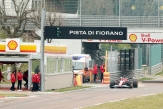
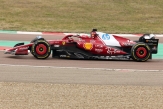
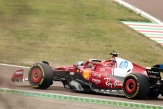

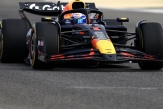
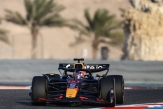
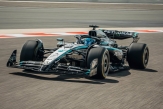
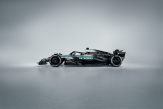
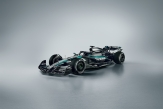
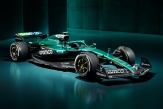
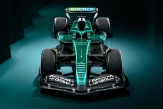
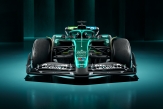
.jpg)
.jpg)
.jpg)
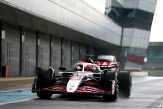
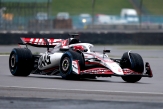
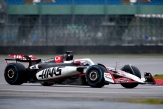
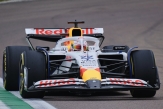
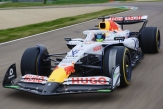
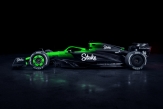
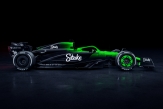

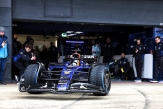
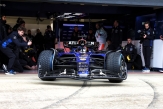
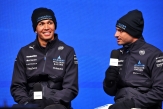

06/11/2025 от Огнян Тенчев (drJeckyll), няма коментари